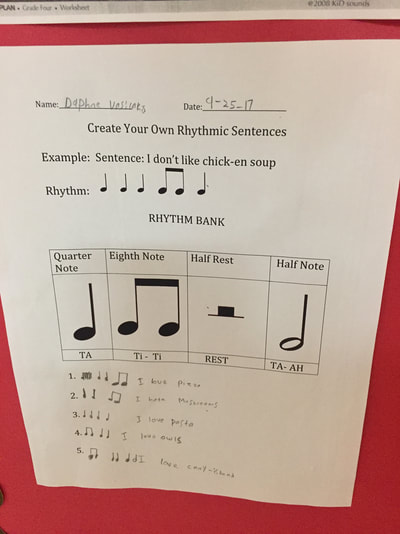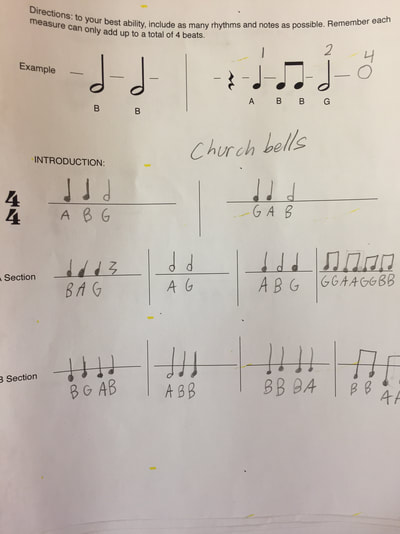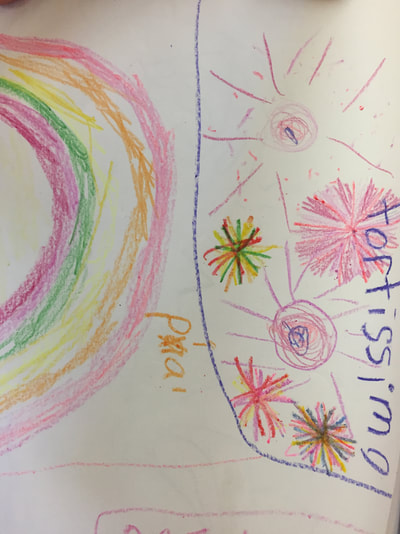MusicObjectives are categorized into five Conceptual Areas
RHYTHM- establish a sense of pulse and an understanding of long/short and fast/slow MELODY- explore high/low, up/down, and pitch matching HARMONY- experience more than one sound at a time ( instrumental/ vocal) FORM- establish the length of the phrase leading to an understanding of same/different TIMBRE- identify and categorize the quality of sound by voice, body or Instrument Students approach Objectives through a variety of experiences. MOVE - explore locomoter and nonlocomoter responses in metered and non-metered settings SPEAK- use the voice rhythmically or freely to explore vocal expression SING - Match pitch independently or within a group LISTEN - Develop aural recognition PLAY - explore the body as an instrument as well as pitched and unpitched percussion NOTATE - demonstrate an understanding of the visual representation of rhythm, melody, and form Lessons unfold through different Stages of Learning IMITATION - teacher modeled response, performed simultaneously or as an echo EXPLORATION- the opportunity to alter a musical experience through experimentation IMPROVISATION - creation of a musical response or idea with or without the element of time VISUALIZATION- the use of graphic or traditional notation leading to musical literacy Objectives are presented through different stages of teaching INTRODUCE - presentation of objectives as an idea or a labeled experience REINFORCE- repetition as an opportunity for practice ASSESS - evaluation through observation or written response |
|












